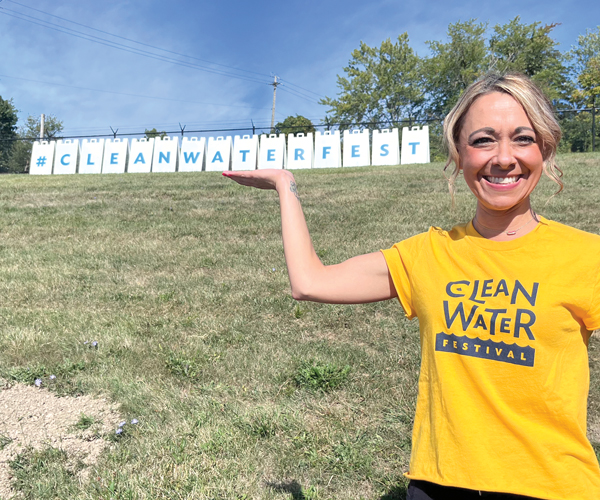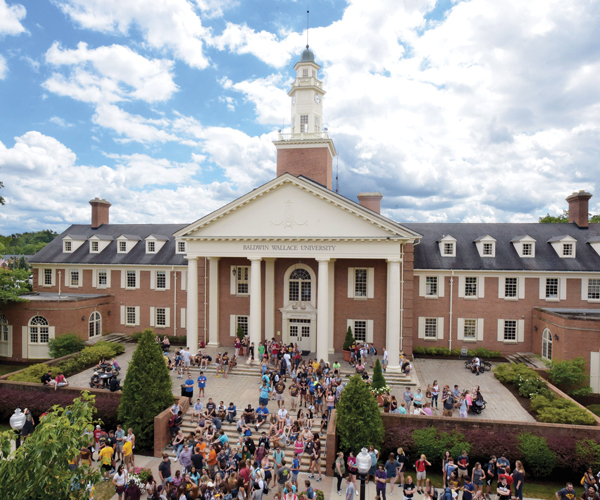They represent the very best of our community, working behind the scenes and without fanfare to help those who are disadvantaged. They populate our corporate board rooms, government and other business and civic organizations, often working anonymously and many times after hours.
America is home to more than 1.3 million charitable nonprofit organizations, according to the National Council of Nonprofits. The Greater Cleveland area alone is home to more than 16,000 nonprofits that do the bulk of the healing, nurturing and feeding of the disadvantaged here in Northeast Ohio.
“I have been involved with the nonprofit sector since the early ’90s when I joined this firm,” says Brandon Miller, CEO of HW&Co. “That might seem like a long time, but it really isn’t when you consider that there are some local nonprofits that have been around for 130 years or more.
“Our company understands the mission of many of our nonprofits. We understand the needs they have for accounting and business advisory services.
“One of the biggest reasons we have such a large nonprofit sector here in Northeast Ohio is that we have a large health care industry, especially with the Clinic, UH and Metro. A lot of our nonprofits address the needs found in health care.”
Quite a few others address social needs like poverty, housing and hunger, Miller adds.
Yet today, these organizations are facing some very real challenges, especially when it comes to the continued delivery of the goods and services to the people and communities that rely on them.
Some issues are related to internal operations such as governance, staffing and financial accountability. Other nonprofits face challenges from issues like fundraising and operations. Most of the issues are caused by forces that are beyond their control.
Across the country as well as here in Northeast Ohio, there is an increased demand for nonprofit services against a backdrop of steadily declining revenues, increasing operations costs and a decline in personnel.
A Gifting Partner: Meaden & Moore
Sometimes businesses contribute dollars to nonprofits. Other times they contribute sweat, blisters and sore muscles.
A successful partnership between the Akron office of Meaden & Moore, a full-service accounting and business consulting firm, and Habitat for Humanity of Summit County, began informally in 2008. Habitat was (and still is) a client of Meaden & Moore, using the firm’s audit services. Occasionally, the accounting firm sent summer interns to volunteer for Habitat, giving them an experience of team building and bonding while building houses for deserving homeowners.
In June of 2023, Habitat kicked off its Women Build project, using an all-woman crew, and Meaden & Moore upped its partnership commitment.
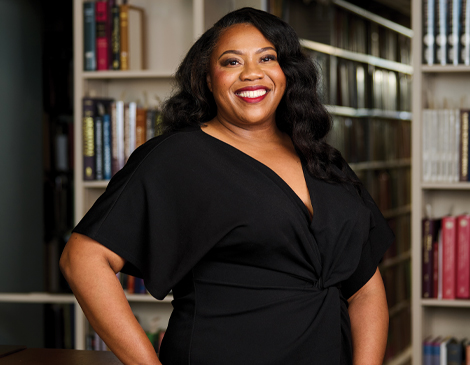
“There was team of us that did the framing of the house, and it was hard work and hot in the summer,” recalls Kendra Philon, Meaden & Moore vice president, Assurance Services Group and not-for-profit practice leader, who also participated in a build this summer. “But it was nice to work side by side with the new homeowner and show what women can do when we roll up our sleeves. We want an equitable community, and volunteering gives you happiness knowing you are making a difference, one project at a time.”
Rochelle Sibbio, president and CEO of the national Habitat for Humanity Summit County affiliate, says “businesses are transitioning and are feeling a little bit more social responsibility to where they have brick and mortar locations.”
Her business partners also include more company employees who are now working remotely. It’s a chance, she says, to get them face to face again while doing something worthwhile for the community.
“Ours is a different and unique team-building opportunity. It puts people’s critical thinking skills together with their physical abilities,” says Sibbio. “I tell people on our building sites that they will be using muscles they don’t normally use and that they will be sore. When I see those people again, they tell me that I was right, but that they loved it so much they are signing up for another Build Day and will bring along coworkers, their family or church members.”
Philon sees partnerships between nonprofits and companies increasing because “nonprofits need businesses to advocate for them, especially when they are trying to get state and federal funding.” A 20-year employee of Meaden & Moore, she says partnerships can help show the real, complete work of a nonprofit.
Meaden & Moore (established in 1919 with additional offices in Cleveland, Columbus and Wooster, as well as eight other states, Canada and the UK) also supports Habitat financially. The firm itself benefits by following leads Habitat has provided, obtaining additional nonprofit clients and volunteering to help others.
“So many not-for-profits have lean budgets. To have accountants, lawyers and others who can help them at no cost or connect them to someone who can at a lower cost is a tremendous help to them,” says Philon, who also suggests that companies make sure that before committing to a nonprofit partnership or volunteer project that it is really something their employees want.
“I know it is a financial commitment, too, for companies to give employees time off to do volunteer work,” adds Philon. “But overall, it comes back tenfold through the happiness of employees and their loyalty to a company.”
Global with a Local Focus: Covia
While it’s a company with a global reach, Covia loves advancing local grassroots causes through its employees and charitable arm: the Covia Foundation. It’s ingrained in the culture and today is just a part of the organization’s DNA.
“Covia is proud to call Cleveland home, and so am I,” says Bruno Biasiotta, president and CEO of Covia. “For many years, the company has given back, supporting nonprofits in our communities and the good work they do.
“In some cases, that means financial support, but whenever possible we also support our employees’ volunteer efforts. We believe we can make a difference every day — last year, Covia team members collectively volunteered over 12,500 hours.”
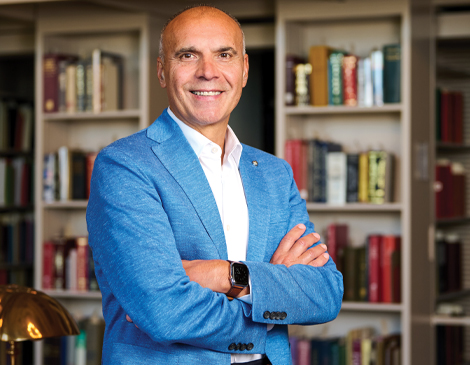
In 2023, the Foundation contributed over $1.1 million to local communities, and much of its charitable work is driven by employees.
According to Kristin Lewis, manager of community relations, the Foundation has a large footprint and a local focus. It is not unusual for an employee to raise funds for a favorite cause, and personally hand deliver it to the charity.
“Our team members might raise money for a food bank and then walk the check down to the charity and present it to them directly,” she explains.
The Foundation offers its employees a wide spectrum of giving options and incentives to engage them in the process, from 1:1 matching gifts up to $1000, to providing 24 hours of paid volunteer time annually.
Employees who volunteer in their communities can also earn grant funding. For example, a volunteer firefighter or little league coach could receive a $500 grant to the charity of their choice up to twice a year for every 40 hours of personal volunteer time, and an additional $100 for every 20 hours.
Lewis says another great asset of the Foundation is the ability to mobilize Covia employees through its Covia Cares Action Days. These volunteer days allow each facility to plan unique volunteer activities to give back to the community. The program has grown quickly since its inception, and in 2023 there were 34 action days.
“We give money to our local plants and let them use it for what is important in their own communities,” says Lewis. “They take the lead on what is best for them.”
In Greater Cleveland, the Independence employees spent their Covia Cares Action Day last year working alongside LAND Studio, beautifying Covia’s City Side Garden and Irishtown Bend in the Flats. Others helped at Cleveland Kids’ Book Bank, collecting and donating more than 200 books.
In addition, the Covia Foundation hosts two major golf fundraisers in the Greater Cleveland area every year. The annual Stars, Stripes & Links golf outing supports and engages injured combat veterans and the Bill Conway Founders Charity Golf Classic, has raised more than $2 million for the United Way since 2007.
“When people individually take an interest in making things better in the world around them, the cumulative benefit for a community can be amazing,” adds Biasiotta. “I’ve been active for many years with several organizations that are personally important to me, and I’m a big believer that getting involved leads to being invested. Ultimately, caring about a community is what makes it feel like home.”
Big League Giving: Cleveland Guardians
We have all seen the oft-repeated Hollywood scene: The baseball hero visits Billy who’s in the hospital with a terminal disease — the player promising him he’ll hit a homerun for him in the afternoon’s big game.
But for our own Cleveland Guardians, giving back to the community means a lot more than belting one onto the left field porch to win the game. (Although for some of us, it is the most important aspect of the organization’s giving back, even if it is just a souvenir for a lucky fan.)
Giving back is important to the Guardians organization from a community standpoint as the home team. But it’s also important to everyone in the organization — not just those who wear a CLE across their chest.
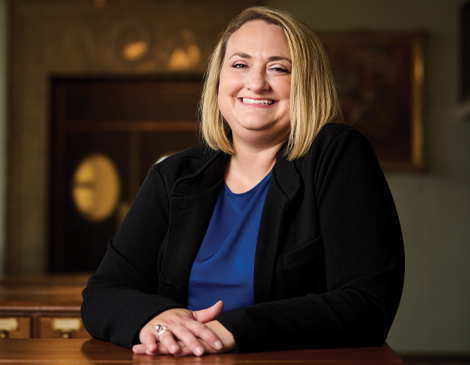
“As you might guess, we have a lot of relationships and partnerships with nonprofits and other community causes,” says Penny Forster, director of Community Impact for the Cleveland Guardians. “But I think the biggest one for us, and one of my favorites personally, is our relationship with the Cleveland Metropolitan School District (CMSD).
“For a very long time, at least since the Dolans bought the team, we have been very supportive of all the baseball and softball programming within the district. We give to the Senate League, which includes high schools within the City of Cleveland, and allow them to use Progressive Field for their championship.”
And through its participation in Major League Baseball’s RBI Program (an acronym that stands for Reviving Baseball in Inner Cities), the Guardians are supporting disadvantaged kids that often need resources.
“The program has really evolved from when it was started two decades ago,” says Forster. “Today it is really about offering kids access, such as supporting travel to tournaments — which today can be very expensive.
“A lot of the tournaments where these kids compete often have college scouts attending who might not be able to see these young players any other way. We are taking advantage of any opportunity we have to help with their experience, so hopefully they grow to love the sport and want to continue to play baseball and softball and continue to play well into college.
“We like to say this and have so year after year, but there is not a baseball or softball game being played within the City of Cleveland that we have not supported by providing access, resources, equipment or simply the opportunity to see the game played.”
In addition to programs offered through CMSD, the Guardians have been major supporters of Boys & Girls Club of Northeast Ohio over the years.
“We support over 400 organizations, whether it’s through direct donations, sponsorships, donations in kind or tickets,” adds Forster. “Whenever they come to us, we always try to provide what they need.”
The Guardians also have an ongoing volunteer program where employees go out in the community, at least once a month, offering their time to nonprofits and charitable causes.
“And through our relationship with the school district, we, and by that I mean many people in our front office including myself, are actively involved with College Now serving as mentors. We also go into classrooms once a month, meeting with eighth grade students to help them make the choice of where to attend high school through our True2U volunteer mentoring program.
“Many times a high school choice can be made by location, what is easiest for your family. But there are other choices as well, such as deciding to attend a school that offers a career path as opposed to one that is more college preparatory. We provide another voice that is different from their family or their teachers, offering them guidance on what they might want to do as they get older.”
Being a Major League franchise, it’s also very important for the Guardians to set a good example for the general public and their fans.
“When our fans see us get involved even in smaller programs and charitable activities, and it inspires them to do more, that is a huge win for all of us,” says Forster.
Of course, nothing is more inspiring than seeing a major league star get out into the community.
Earlier this season, Xzavion Curry, Steven Kwan and Triston McKenzie, three of the Guardians True2U mentors, invited their students to Progressive Field. For many of the students, it was their first time attending a Major League Baseball game. During their visit, the eighth graders enjoyed a meet-and-greet by the Guardians dugout, food vouchers and an honorary “play ball” feature at the beginning of the game.
Guardians second baseman Andrés Giménez kicked off a second season of his program Art with Andrés, by visiting Buhrer Dual Language Academy in Cleveland. Joined again this year by local art instructor Augusto Bordelois, the students and Andrés spent the class drawing a lion, taking pictures and signing autographs, all while speaking their native language of Spanish.
Logan Allen, David Fry, Hunter Gaddis and Nick Sandlin visited the Cleveland chapter of the nationwide organization, First Tee. It’s an organization that seamlessly integrates the game of golf with life skills curriculum by creating learning experiences that build inner strength, self-confidence and resilience for kids to carry into everything they do. While there, the group toured the newly renovated facility, interacted with the children and staff, took photos and signed autographs.
Honorary Perky Pantry Engineer Josh Naylor paid what has become a monthly visit to the Cleveland Ronald McDonald House to pack lunches with his fellow volunteers. The lunches were then delivered to families at the Cleveland Clinic. Naylor played catch with some of the kids staying at the House and practiced with Mary Jane Soltysiak, a Ronald McDonald House volunteer, who threw out the first pitch at Progressive Field the next night.
“It’s no secret that our players have become incredibly attached to Cleveland over the last few years,” says Forster. “We’re really starting to see how much Cleveland means to them and what causes they are truly passionate about. I think we’ll see plenty more stories like his in the months ahead.”
Building a Better Tomorrow: Eaton
For Angela Vannucci, director of corporate development and planning at Eaton, it all comes down to breaking poverty’s vicious grasp on our region.
“At Eaton, we look to improve the quality of life for the people we serve, our customers and our employees, as well as the communities that serve as our homes,” she says. “It’s also very important to make sure we support issues that are important to our employees.”
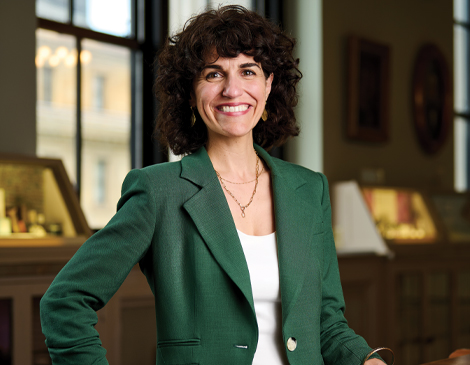
That’s the reason Eaton is so supportive of its employees’ efforts, which include volunteering and donations through the company’s various community engagement campaigns.
With a worldwide reach, Eaton serves many communities around the world, creating vibrant places to live and work. That’s just one of the reasons Eaton has been on 3BL Media’s “100 Best Corporate Citizens” list for the last 15 years.
Globally, Eaton’s employees have volunteered more than 30,800 hours a year. The company has opened its coffers, too, doling out some $10 million on an annual basis, supporting major initiatives such as: arts, culture, community and economic development, education, the environment, health and human service programs and more.
But this year, Eaton focused on one organization in an effort to help local communities combat what has become a vicious cycle of poverty.
“We made a substantial contribution to Habitat for Humanity’s international organization,” says Vannucci of the company’s $500,000 donation. “It allows us to partner more closely with our local chapter of the Greater Cleveland Habitat for Humanity, which is one of the reasons I am so excited about it.”
And she should be. After all, Vannucci joined the board of the Greater Cleveland Habitat in January of this year.
“I am really passionate about the issue of poverty in Cleveland,” says Vannucci. “Thirty percent of people living in Cleveland live at or beneath the poverty level and an even higher percentage are children. Forty-six percent of children in Cleveland live at or below the poverty level.
“Affordable housing is very important to breaking the cycle of poverty. If you can’t afford a home, there are wider issues that seem to percolate through over the course of time. A lack of affordable housing creates economic inequality and racial inequality — it creates a lot of issues that just seem to snowball over time.
“Being on the board of our local Habitat has been an exciting way to see how we are impacting and improving lives in our communities by making housing more affordable.”
This year, Greater Cleveland Habitat for Humanity has dramatically increased its efforts.
“Over the next couple of years, our local Habitat for Humanity chapter is going to help 400 households in Cuyahoga and Lorain counties through a program we are calling the 400 Home Initiative,” says Vannucci.
With a timeline that runs from 2023 to 2027, the $33 million initiative aims to build 100 new homes, rehabilitate 50 existing homes and repair or enhance 250 additional homes in Cuyahoga and Lorain counties. The initiative’s mission is to generate housing stability and wealth creation for our area’s underserved populations. It is being done in partnership with the Cuyahoga Land Bank.
Over the course of the next three years, Greater Cleveland Habitat will be working in Wards 2 (Mount Pleasant), 4 (Buckeye Woodhill), 8 (Collinwood), 11 (West Boulevard) and 15 (Detroit-Shoreway) to build, rehabilitate and repair homes. New homes will be sold at an appraised value with a 0% interest mortgage.
While Vannucci is directly involved in Greater Cleveland Habitat’s initiatives and operations, she is quick to credit the company as well as Eaton’s many local employees who donate both time and money to the organization’s cause.
“I am always impressed with the number of employees from Eaton who are involved with builds or spend their days off volunteering for Habitat,” says Vannucci. “I feel very supported by Eaton, and Eaton has encouraged me to volunteer my time and expertise on the local board.”
Choosing to Choose: Oswald Companies
If you look at charitable events anywhere in the Greater Cleveland area, you’ve probably seen the name of the Oswald Companies. Presenting sponsor, partner or simply company volunteers in t-shirts manning a booth, this is one company that supports myriad nonprofits through special events as well as on a daily basis.
Earlier this summer, the company served as Presenting Sponsor for the Hospice of Western Reserve’s 14th Annual Walk to Remember, helping the organization meet its goal of raising more than $350,000 from over 1,062 donations and 1,162 folks who made the trek through Cleveland Metroparks Zoo. But that’s really just the tip of the iceberg.
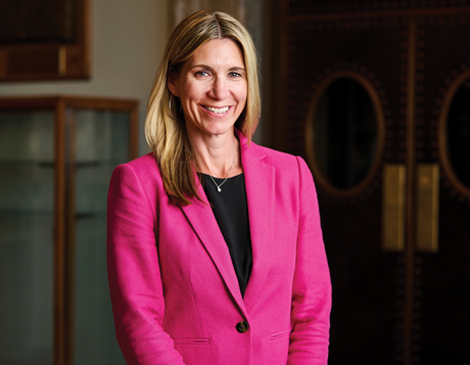
“We are very engaged and involved in the community,” says Jessica Jung, president of Oswald Companies. “Cleveland has been our hometown for more than 130 years. And one of our core values is to give back to the community. That’s why we are involved with so many larger as well as smaller nonprofits throughout the community — it’s just who we are.”
Does Jung have a favorite nonprofit initiative that Oswald supports?
“That’s kind of like asking a parent to pick their favorite child,” says Jung. “I suppose they are all my favorite, but in different ways. The best way for me to answer that is to talk about what we do.”
As an employee-owned company, Oswald’s employee/owners are very immersed in Greater Cleveland’s nonprofit community.
“We serve or are involved with more than 70 nonprofit boards that are local,” says Jung. “And we have hundreds and hundreds of service hours across all of these organizations. Our employee/owners get a personal day of caring as well as a company day of caring, when they can donate their time to an organization they want to support.
“That means something different to every one of our employee/owners,” offers Jung. “So I guess my favorite thing is that everyone gets to choose their favorite cause, something that they are passionate about, and we support that with time and money.”
So how much time do Oswald’s employee/owners volunteer each year?
“I really don’t know, because we have never aggregated it,” says Jung. “But it has to be several hundreds of hours.
“We have 425 employees that spend at least two days a year giving back to their community or supporting charitable causes in some way,” adds Jung. “On top of that, they often volunteer their own hours. Then you have to add in all the hours donated by sitting on nonprofit boards. It’s probably in the thousands of hours, now that I think about it.”
While volunteering is an important core value, Jung is cognizant of the money Oswald donates to charitable causes as well.
“Money is always very meaningful,” she says. “We feel that giving back is such a strong core value of ours that it is equally important. Our employee/owners are very good, and many are attracted to our company because of it.
“Giving back to the community and charitable causes also serves as a means of attracting talent as well. People often feel that they want to be a part of something that is meaningful to them.
“We live here. We work here. We play here. Maintaining a thriving community is critical to all of us. We want our employee/owners to feel that as well.”
Through a Loving Lens: Smuckers
What’s not to love when a cute dog looks up at you with big round eyes? You pick it up and take it home. But sometimes it’s hard to photograph those wiggly puppies or more mature dogs that might not trust you.
Not all dogs are photogenic. They can appear fearful or mean, especially if they are photographed quickly or at a shelter behind a chain link fence.
“There is a need for professional photography at shelters. We have learned that higher quality images translate to higher adoption rates,” says Kara Buckler, senior director, Creative and Design, for The J.M. Smucker Company. “With that in mind, one of our volunteer teams on an outing to the Wayne County Humane Society came back and formulated the Loving Lens Project. It’s been great. We send our photographers to the Humane Society and to the Wayne County Dog Shelter.”
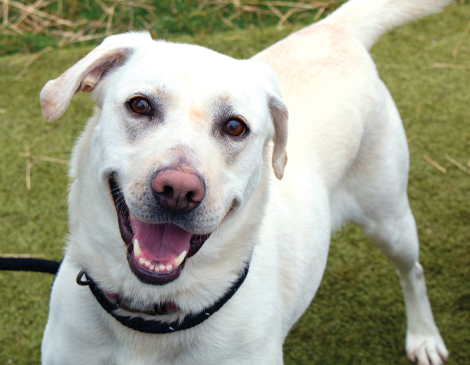
Once the pups and cats are photographed by the Smucker creative photography team, the images are posted on shelters’ websites and elsewhere. Since this spring, the two-year-old program has helped place approximately 317 dogs and cats.
“We have the capacity to care for up to 86 cats and 48 dogs. On average we have 120 animals in our care at once. We are a 501 (c)(3) and are donation-oriented,” says Wayne County Humane Society Shelter Director John Carhart, who has 10 dogs of his own. “Smucker’s has always been wonderful to us. The photographs make a difference in getting these animals homes and giving our staff time to do other necessary things.”
Smuckers recently expanded the Loving Lens Project to include nonemployee photographers, both professional and amateur, to ensure as many animals as possible are photographed. And not all volunteers in the project need a camera. To successfully photograph that tail-wagging beagle or calico cat, someone needs to help the animals become calm and comfortable.
“There has been broad interest in this program across the entire company. We have so many employees who are passionate about pets. And, also, because part of our portfolio is pet food and pet treats, this program fits right in,” says Buckler, adding that employees have the opportunity to volunteer during the workday.
Smuckers was founded in 1897 by one man selling apple butter and is now led by his family’s fifth generation. The company, with 9,000 employees, has a portfolio of more than 40 brands — think jam, jellies, peanut butter, sweet baked snacks, coffee and more — and is found in more than 80% of U.S. homes.
Buckler, a 20-plus year Smucker’s employee, says, “Folks involved in the project find it very fulfilling to step outside the day-to-day and know they are making an impact.” Human resources departments understand that recruitment and retainment is more successful if employees can develop or in engage personal interests outside the company with the encouragement of employers.
“We have so many dogs and our staff is quite small,” says Katelyn Lehman, director and dog warden, Wayne County Dog Shelter. “We appreciate the Loving Lens Project where they come in and photograph about eight dogs once a month. We try to start with the dogs that have been here the longest. We want people to see them looking their best.”
Champions of Culture: Sally Zlotnick Sears and Larry Sears
Sally Zlotnick Sears says she and her husband, Larry Sears, are “not part of the old money of early industrial Cleveland” that created and historically supported many of University Circle’s greatest cultural institutions, including the Cleveland Museum of Natural History (CMNH).
“Larry and I are second generation Americans. But we still feel a connection to the people who came before us and who currently support our institutions, because we all do it for the same reason — to make Cleveland a great city,” says Sears, the first female CMNH board chair in more than 100 years.
According to Sonia Winner, CMNH president and CEO, the Searses (members of the museum since the 1980s) have made several significant monetary gifts to the museum, totaling more than $12 million. In recognition of the couple’s support, the Larry Sears and Sally Zlotnick Sears Dynamic Earth Wing, part of CMNH’s $150 million transformation, is set to open in December.
Larry Sears can list electrical engineer, inventor and professor among his list of professions. Sally Sears earned a master’s degree in library science and has devoted her life to leading the kinds of boards and committees that make a huge difference to the area’s cultural institutions, including the nonprofit CMNH
The museum “is a place to appreciate our place in nature,” while it conducts important scientific research, and is “a champion of literacy and education,” says Sally Sears, citing causes that are important to the couple. But it was also at the museum where her young children were able to see dinosaur bones up close and gaze at the stars above their heads, bringing much joy to the entire family. The couple’s daughter, Natalie Sears, is now a CMNH copy editor, currently helping to translate highly scientific language into more visitor-friendly signage.
Winner is grateful for annual gifts to the museum. But she also says endowment dollars and significant gifts, such as those by the Sears family, are incredibly important to ensure the future of nonprofits. The funds make investments possible and help “provide cushions when something like COVID happens.
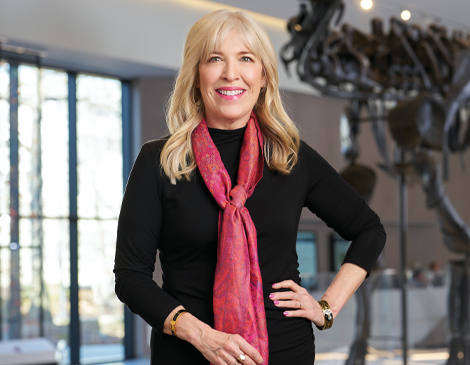
“If I had the opportunity to give at a large level, I’d be looking at the organization’s financial picture. I’d want to make sure it has a strong record of investing in the right resources,” advises Winner. “The museum has had 45 years of balanced budgets. It’s really important that donors support not only nonprofits that are mission-based and align with their interests, but which use your money wisely.”
Sally Sears has also had a hands-on approach with the museum’s physical transformation. She made suggestions to create more comfortable, safe and practical seating, and offered ideas to enhance the feeling of being welcomed at the entrance.
She is eager to see CMNH begin its new chapters.
In the meantime, Sears never misses an opportunity to view the museum’s stunning mineral collection nor its Jeptha Homer Wade II Gem Collection, now on display in the museum’s Visitor Hall. And then there is the Larry Sears and Sally Zlotnik Sears Garden, at the corner of Martin Luther King Jr. Drive and East Boulevard, showcasing the legendary Cleveland artist and designer Viktor Schreckengost’s Mammoth and Mastodon sculptures.
“Whenever we had discussions about the future of the museum, Larry always reminded me that it was the building itself holding us back. It was dark and we weren’t really showing people what we were doing inside,” says Winner. “That’s not the case anymore, largely in part because of Sally and Larry.”


